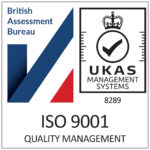Month: February 2025
Paint Mixing Machine: Revolutionizing the Mixing Process
The quality of paint and coatings is paramount in commercial and industrial applications. Achieving the perfect colour and texture is crucial for residential homes, commercial buildings, or specialized industrial projects. This is where paint-mixing machines come into play. These machines ensure that paints are mixed thoroughly and consistently, eliminating the risk of colour variations and ensuring a smooth application. Among the various types of paint-mixing machines available, gyroscopic paint-mixing machines stand out due to their innovative design and functionality.
Utilizing the principles of gyroscopic motion, these machines provide a unique mixing experience that enhances the quality of the final product. The gyroscopic motion allows for a more uniform distribution of materials, resulting in consistent colour and texture throughout the paint. Modern gyroscopic paint mixing machines have features that streamline the mixing process, such as an auto-unlock tray for easy removal of paint cans and robust steel frame construction for durability. Let us explore the workings of gyroscopic paint mixing machines, their features, applications, advantages, and tips for choosing and maintaining the suitable machine for your needs. Let us see how this specialized equipment can improve the efficiency and quality of your paint-mixing processes.
Understanding Gyroscopic Motion
The gyroscopic motion refers to the behaviour of a spinning object that maintains its orientation due to angular momentum. This principle is harnessed in paint mixing to create a dynamic mixing environment. When the mixing container is spun at high speeds, the gyroscopic motion causes the materials inside to move in a circular pattern, ensuring that all components are thoroughly combined. The benefits of using gyroscopic motion in paint mixing are numerous.
- It allows for a more efficient mixing process.
- Traditional mixing methods often lead to uneven distribution of pigments and additives, resulting in colour inconsistencies and texture variations. Gyroscopic mixing, on the other hand, promotes a uniform blend, minimizing the risk of batch variations.
- The motion created by gyroscopic mixing reduces the air introduced into the paint, which can lead to bubbles and imperfections in the final product. This is especially important for high-quality finishes where any imperfection can be noticeable.
Overall, gyroscopic motion enhances the mixing process, leading to superior results in paint and coatings.
Key Features of Gyroscopic Paint Mixing Machines
1. Auto-Unlock Tray
One of the standout features of gyroscopic paint mixing machines is the auto-unlock tray. This innovative design enables easy removal of paint cans from the machine, enhancing user convenience and efficiency. Traditional paint-mixing machines often require manual intervention to release the cans, which can be cumbersome and time-consuming. The auto-unlock mechanism streamlines this process, allowing operators to focus on other tasks while ensuring the paint is mixed correctly.
2. Construction
Durability is a critical factor in any industrial equipment, and gyroscopic paint-mixing machines are no exception. These machines are typically constructed from robust steel frames, providing the strength and stability needed for heavy-duty mixing applications. The steel construction ensures longevity and minimizes vibrations during operation, which may affect the quality of the mix. The design of these machines incorporates features that protect against wear and tear, such as reinforced mixing containers and high-quality bearings. This attention to construction detail contributes to the overall reliability and performance of the equipment, making it a worthwhile investment for businesses in the paint and coatings industry.
3. Precision Control
Modern gyroscopic paint mixing machines have advanced control systems, allowing operators to adjust mixing parameters precisely. Users can modify settings such as mixing speed, rotation direction, and duration to suit their requirements. This level of control is essential for getting the desired consistency and quality in the end product. For instance, different types of paint may require varying mixing speeds to achieve optimal results. By having the ability to fine-tune these parameters, operators can ensure that each batch meets the necessary standards for colour and texture. This versatility makes gyroscopic paint mixing machines suitable for various applications and materials.
Applications of Gyroscopic Paint Mixing Machines
Gyroscopic paint mixing machines are primarily used in the paint and coatings industry, where they play a crucial role in ensuring uniformity and quality. Some of the critical applications include:
Paint and Coatings
The most common application of gyroscopic paint mixing machines is in producing paints and coatings. These machines are designed to handle various paints, including water-based, oil-based, and speciality coatings. By utilizing gyroscopic motion, manufacturers can achieve consistent colour and texture, essential for customer satisfaction and product performance. In addition to traditional paint mixing, these machines can blend additives, pigments, and other materials to create custom formulations. This flexibility allows manufacturers to cater to specific customer needs, enhancing their competitive edge.
Advantages of Using Gyroscopic Paint Mixing Machines
The advantages of gyroscopic paint mixing machines extend beyond just improved mixing efficiency. Here are some key benefits:

1. Enhanced Mixing Efficiency and Consistency
Gyroscopic paint mixing machines provide a mixing efficiency that is challenging with traditional methods. The unique motion ensures that all components are thoroughly combined, producing a uniform product. This consistency is critical for maintaining quality across batches, especially for businesses that rely on brand reputation.
2. Reduction in Batch Variations
One of the significant challenges in paint production is batch variations, which can lead to inconsistencies in colour and texture. Gyroscopic mixing minimizes this risk by ensuring that each batch is mixed uniformly. This reliability improves product quality and reduces waste and rework, ultimately saving time and resources.
3. Versatility in Handling Different Materials
Gyroscopic paint mixing machines are designed to handle various materials, including liquids, powders, and pastes. This versatility makes them suitable for various applications beyond just paint mixing. Manufacturers can use these machines to blend other materials, such as adhesives, sealants, and coatings, further enhancing their utility in industrial settings.
Choosing the Right Gyroscopic Paint Mixing Machine
When selecting a gyroscopic paint mixing machine, several factors should be considered to ensure that you select the right one for your needs:
Size and Capacity Requirements
Specific Features Needed for Different Applications
Manufacturer Reputation and Support Services
Evaluate the machine’s size and capacity based on your production requirements. Consider the volume of paint you typically mix and whether you need a machine that can handle larger batches. Selecting a machine that can satisfy your current needs while allowing for future growth is vital.
Different applications may require specific features in a paint-mixing machine. For instance, if you frequently work with speciality coatings or additives, look for machines that precisely control mixing parameters. Features like the auto-unlock tray should be considered for ease of use and maintenance.
Research the manufacturer’s reputation before making a purchase. Look for companies known for producing high-quality equipment and providing excellent customer support. A reliable manufacturer will offer warranties, maintenance services, and readily available replacement parts, protecting your investment.
Maintenance and Care for Longevity
Regular maintenance is vital to increase the lifespan and performance of your gyroscopic paint mixing machine. Here are some tips for keeping your machine in optimal condition:
Regular Cleaning
Inspect for Wear and Tear
Follow Manufacturer Guidelines
After each use, clean the mixing container and any other components that come into contact with the paint. Residual paint can lead to contamination and affect the quality of future batches. Use appropriate cleaning agents and follow the manufacturer’s recommendations for cleaning procedures.
Examine the machine regularly for wear and tear, particularly on moving parts such as bearings and seals. Addressing any issues promptly can prevent more significant problems and extend the machine’s lifespan.
Always adhere to the manufacturer’s maintenance guidelines and recommendations. This includes routine checks, lubrication of moving parts, and any necessary adjustments. Following these practices will ensure that your gyroscopic paint mixing machine operates at peak performance.
Conclusion
Gyroscopic paint mixing machines are a game-changer in the paint and coatings industry, improving efficiency, consistency, and versatility. By leveraging the principles of gyroscopic motion, these machines ensure that every batch of paint meets the highest quality standards, reducing the risk of variations and imperfections. As you consider investing in a gyroscopic paint mixing machine, remember the key features, applications, and maintenance tips discussed in this blog. Choosing a suitable machine can significantly improve your mixing processes, leading to better products and increased customer satisfaction. Embrace the future of paint mixing with gyroscopic technology and elevate your production capabilities.
We at Creative Resins offer supreme quality Paint Mixing Equipment at the best prices. The mixing time of our equipment is 60 seconds, and it can effortlessly mix weights up to 36 Kg. Our equipment has an auto-unlock tray, making removing the paint cans from the machine easier. It is manufactured using a steel frame construction with an overall weight of 245 kg, providing a silent operation. It is easy to operate with user-friendly controls. Call us now! – 01795 411820



